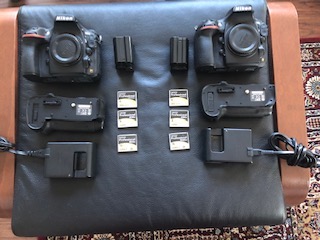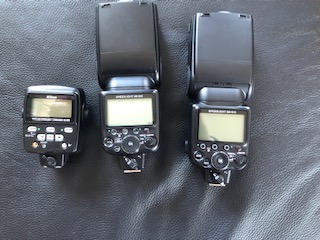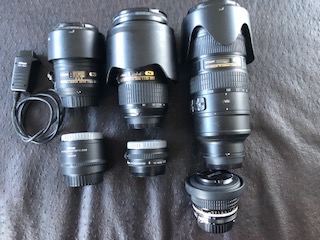 RM Ham University – Test and Measurement
RM Ham University – Test and Measurement
The Rocky Mountain Ham Radio group offers an educational series they call RMHAM University. I am honored to be able to present on the topic of Practical Ham Radio Measurements on Saturday morning Dec 15th.
As many of you know, this topic is an intersection of my hobby of amateur radio and 40 years working in the electronic test and measurement industry. I’ve written two books on the electronic measurement and enjoy talking about it.
Here’s the agenda for the class.
| Topic | Comments | Time |
| 1. Introduction | Measurement Concepts, trends in test and measurement | 8:00 to 8:30 |
| 2. Digital Multimeters | Voltage, current and resistance measurements | 8:30 to 9:20 |
| Break | ||
| 3. SWR Measurement | SWR, reflection coefficient, SWR measurements, antenna analyzers, vector network analyzers | 9:30 to 10:20 |
| Break | ||
| 4. Oscilloscope measurements | Time domain, bandwidth, scope probes | 10:30 to 11:00 |
| 5. RF Measurements | Frequency domain, spectrum analyzers, SDR receiver, transceiver tests, power measurement | 11:00 to 11:30 |
| Discussion and wrap up | 11:30 to noon |
Location and Registration
4700 S. Yosemite St.
Greenwood Village, CO 80111
https://www.rmham.org/wordpress/rmham-university-2018/
The post RM Ham University – Test and Measurement appeared first on The KØNR Radio Site.
Bob Witte, KØNR, is a regular contributor to AmateurRadio.com and writes from Colorado, USA. Contact him at [email protected].
 Nikon camera gear for sale.
Nikon camera gear for sale.
Mike Weir, VE9KK, is a regular contributor to AmateurRadio.com and writes from New Brunswick, Canada. Contact him at [email protected].
 ICQ Podcast Episode 282 – Android Rig Control
ICQ Podcast Episode 282 – Android Rig Control
In this episode, Martin M1MRB is joined by Leslie Butterfield G0CIB, Matthew Nassau M0NJX and Bill Barnes N3JIX to discuss the latest Amateur / Ham Radio news. Colin M6BOY rounds up the news in brief and this episode’s feature is Android Control Rig.
ICQ AMATEUR/HAM RADIO PODCAST DONORSWe would like to thank Nicholas Wood, Neil Connor and Andrew Brook (M7ABR) along with our monthly and annual subscription donors for keeping the podcast advert free. To donate, please visit - http://www.icqpodcast.com/donate
93-year-old WWII Veteran Still Taps out Morse Code
'Musical' Waves Detected in Earth's Magnetic Field
Austrian Ham Radio Regulatory Changes
Android App connects to D-STAR
December 2018 is YOTA Month
Two New Turkish Band Access for Christmas
Canadian National Parks on the Air Event Set to Start on 1st January 2019
ExseedSat Designated as VO-96
Colin Butler, M6BOY, is the host of the ICQ Podcast, a weekly radio show about Amateur Radio. Contact him at [email protected].
 TX Factor Christmas Episode is Live
TX Factor Christmas Episode is Live
The long-awaited new episode of TX Factor is now live!
TX Factor is sponsored by Martin Lynch & Sons, and the Radio Society of Great Britain and is also supported by viewer donations.
Nick Bennett 2EØFGQ co-hosts TX Factor with Bob McCreadie GØFGX and Mike Marsh G1IAR. Contact the team at [email protected]
 630m … The New ‘Magic Band’?
630m … The New ‘Magic Band’?

The 'magic band' has always been associated with 50 MHz and its amazing propagation ... usually unpredictable and often without logical explanation. This past summer saw an explosion of digital FT8 activity on 6m which has, for me (and for others I suspect), eliminated almost all of the enjoyment I have found every year on this band.
With so much of the previous CW and phone activity now gone to FT8, the 'feel' of the band is just not what it once was. What I find puzzling is that so many have embraced this weak signal mode yet most of the two-way QSOs seem to be made between stations that can easily hear each other ... often at the very strong levels produced by 6m sporadic-E!
With FT8's inability to chat about antennas, rigs, propagation, locations or simply to exchange names, for me the magic has gone. Being able to hear signals build, fade up and down, or to experience the sudden arrival of bone-crushing signals from the east coast where none had existed moments earlier, is all part of what attracted me to 6m decades ago. I spent only a few hours on the band last summer, working a number of JA stations on FT8. No particular sense of satisfaction was garnered ... working a JA opening on CW is just way more exciting!
For many, the arrival of FT8 to the magic band has opened a whole new world and from seeing so many unfamiliar call signs on 6m this summer, it seems that FT8 has brought a lot of newcomers to the band. Unlike the JAs' worked every summer on CW, almost all of the FT8 JAs' sent their QSL immediately, with almost all excitingly indicating "1st VE" ... so this has to be a good thing! I suspect, that unless the level of conventional-mode activity returns to previous levels on 6m (highly unlikely), my interest in 50MHz will slowly wane or vanish altogether ... but thankfully, there's still magic to be found elsewhere on the ham bands!
As solar Cycle 24 draws down into its final months, the deep lows that were experienced at the end of Cycle 23 are starting to develop once again. For the past few weeks, propagation below the broadcast band has been the best it has been since the previous solar quieting.
Being just below the bottom edge of the broadcast band, 630m (472-479 kHz) has seen some of the benefits of the recent round of stagnant geomagnetic activity.
While some transcontinental QSOs are regularly being made on CW, most contacts are being completed using the weak signal JT9 QSO mode. Contacts can often be completed just as the sun begins to set and staying up into the wee hours to catch east coast DX is not a requirement. Over the past few weeks my 'states worked' total has climbed to 30 and with a couple of holdouts, the QSLs have been steadily arriving.
 |
| My 630m states worked, shown in red. Map courtesy: https://mapchart.net/ |
Last month's arrivals, in spite of the Canada Post delivery disruptions, are shown below.
The recent great propagation on 630m is well-demonstrated by last Saturday night's activity. For the previous two evenings, my JT9 CQ's (as well as QSOs) were being decoded for hours at a time by Rolf, LA2XPA in Norway. He was also hearing Larry, W7IUV, located a few hundred miles to my southwest, on the other side of the Cascade mountains in Washington state. Both of our signals would fade and trade places in Norway but often reaching audible CW levels! The problem was that neither myself or Larry could see any of Rolf's replies to us ... disappointing to us and frustrating for Rolf.
After an hour of trying, I asked Rolf (via the ON4KST LF chat page) what he was using for a receive antenna. It turned out that his secret weapon was a 1000' beverage pointed this way ... no wonder he was hearing so well. Larry, who was using a shorter, easterly pointing BOG (Beverage On Ground) for 630m receive, commented that he also had a 1000' beverage pointed toward Europe but it was optimized for 160m and doubted that it would work on 630. Just to make sure, he plugged it into a second receiver and soon indicated that he 'might' have seen a weak JT9 trace on the waterfall, close to Rolf's frequency.
One minute later Larry's comment was just "wow!" and the following minute he explained what had occurred. It seems that the 'possible weak trace' had suddenly skyrocketed to a -16db signal ... right at the edge of audibility! Larry and Rolf quickly exchanged signal reports and "RRs" as the first Europe-West Coast 630m QSO went into the history books ... 'wow' indeed!
Rolf reported that at his end, Larry's already good signal suddenly shot up to -5db, an easily copied CW level, before fading away for the night. Larry was pretty shocked at how quickly this strong short enhancement had occurred and we all hoped that the oft observed 'spotlight' propagation seen on 630 would move further west to VE7 ... but for now, it was not to be.
Earlier in the evening I had commented to Larry about some previous quirky 630m propagation and had suggested to him that it was probably just due to "the magic of radio" ... to which he politely dismissed with "sorry no magic, just hard work and dumb luck". Looks like he was right on both accounts, but after Saturday's excitement I think he may now believe in a little magic as well!
Steve McDonald, VE7SL, is a regular contributor to AmateurRadio.com and writes from British Columbia, Canada. Contact him at [email protected].
 Cloudlog on a RPi zero w
Cloudlog on a RPi zero w

As many will testify. I’m not that bright when it comes to clever computer stuff. I can follow instructions quite well and normally this gets me by. So I thought for December I would set myself a challenge of setting up Cloudlog (A really nice looking logging application from Peter 2M0SQL). Only I would be putting it on a Raspberry Pi zero w, without a safety net…or any knowledge of sql, php or any other such acronyms. Here’s what happened.
First things first – You need a LAMP server.
A LAMP server (Linux, Apache, MySQL, PHP) is the thing that will run Cloudlog. We’ll have the Linux part because we’re going to use the normal Raspbian Lite image for our RPI zero w. Apache is installed, as is MySQL and PHP. So first things first. This post is like a nice meal, you’ll not be having bread first, just the starter. Just don’t rush it.
Starter
Do you have a RPi zero w? – If you struggle to find one then use a nice search engine that doesn’t follow you round with a notepad checking on what you’re up to. Perhaps buy from an independent retailer or support your local Pi shop, it might cost a couple of quid extra but you can feel smug about it.
- Have you got the latest Raspibian lite image? If not download it here
- Is is burnt to a suitable micro SD card? I use Sandisk class 10 ones as they seem to be quickest and reliable enough. Try your high street. If not try and support you local Pi shop. This will be the OS ready to go.
- Have you connected to the internet using the command line? it’s pretty easy really, just use this guide.
- Have you enabled SSH on your RPI zero w? RPi headquarters can help again.
- Do you know the ip address of your RPi zero w? in the command line just type.
hostname -I.It will spit out your ip address. For example mine is 192.168.1.113. Make a note of this you’ll need it - Have you logged into your RPi zero w using SSH? Section 4 will help you here
Main Course
So I was really comfortable with the starter. It wasn’t too heavy and just got me feeling a bit peckish for some more. This is where I was a bit uncomfortable and thought that I may have bitten off a bit more than I could chew. But it all worked out nicely in the end.
Installing the server
I followed this guide. I believe that it is de rigueur to caveat this part with some statement that ‘your mileage may vary’ or some such waffle. It might, but if this guide is wrong please shout up and I will correct it. It worked for me but it would be a lot easier if it worked for everyone. You’ll do some straightforward and not so straightforward stuff.
- Make sure everything is up to date
- Install Apache & do a bit of tidying up
- Install PHP
- Install MySQL & do a bit of detective work
- Setup FTP
Everything seems to go well until you hit part 4 where something goes a bit wonky with permissions. I spent quite a bit of time on this and found out that the permissions on the default myphpadmin account weren’t up to scratch and there is a bit of jiggery pokey to do. This should sort it.
Get yourself into MySQL and change the users
From what I could gather the default user does not have enough privileges to do anything, nor does it have access to the users tab in myphpadmin to create a new one. We have to go into MySQL and create
mysqladmin -u root password 'password'
Log in to MySQL
mysql u root
Then do the following. I think I understand, you create a new user using the GRANT command
GRANT ALL to 'username' @ 'localhost' identified by 'password';
where believe it or not the ‘username’ and ‘password’ are exactly that, but for a new user. We’ll use this later
Install Cloudlog
This bit is dead easy. The Cloudlog wiki is exactly what you need. I won’t repeat it here. So for me I downloaded the files from the GitHub page, unzipped them and then uploaded them with an FTP program (Filezilla is popular) to the /var/www folder in the RPi.
Go to your web browser and type in the url you got earlier when you did the hostname -I (Something like 192.168.1.113) only add /install at the end, so for completeness is should be
192.168.1.113/install
Up pops a dialogue. Fill in your details and you are away.
Note: I mucked about a few times when I was sorting out privileges and ended up forgetting the username and password, but the dialogue was good enough to me and I just re-entered everything and it went the second time.
You can now log in as the guest account m0abc which is notes at the bottom of the dialogue.
Dessert
There are a few things to do to get everything ship shape. Firstly delete the demo account and put in your own. Then upload an adif of your existing log (should you have one)
Delete account and create your own
Really easy Admin > Users
Create yourself and give yourself the admin rights
Delete m0abc
Done
Upload adif
So, it turns out that not all adifs are the same. The header in the example below is not to the right format

Whilst this is

Note the ‘#’ at the beginning of every line in the header. If you are going to upload an adif this needs to be checked
Sitting in a comfortable chair and snoozing
I didn’t find this nearly as daunting as it first looks. There is plenty of information on the Cloudlog wiki and to be honest the only hard bit was sorting out the permissions. You don’t need to be an expert in computering. I now have a log I can access on my Linux laptop, Tablet and phone. If I was really down with the kids it wouldn’t be hard to have it web based (I think that can be done for you by MagicBug).
I would say that you’ll probably need a couple of hours to do it but the reward is a good looking, simple to use log that is agnostic to OS.
Give it a go, if any of the instructions are wrong, can be made better or are glaringly stupid because they’ll steal your soul (or sole if you’re not looking) then let me know and we can make this post really handy.
Alex Hill, G7KSE, is a regular contributor to AmateurRadio.com and writes from Cumbria, UK. Contact him at [email protected].
 LHS Episode #262: RigPi Deep Dive
LHS Episode #262: RigPi Deep Dive
 Welcome to Episode 262 of Linux in the Ham Shack. In this episode, we have a special guest, Howard Nurse, W6HN, a longtime amateur radio operator and open-source enthusiast. He has developed the RigPi Station Server, a Raspberry Pi-based hardware and software rig control and operation solution that will be manufactured and sold by MFJ Enterprises. We take an in-depth look at the platform, the underlying operating system, code, open hardware boards, upcoming amateur radio network solution and much more. Thank you for listening and we hope you enjoy this deep dive episode.
Welcome to Episode 262 of Linux in the Ham Shack. In this episode, we have a special guest, Howard Nurse, W6HN, a longtime amateur radio operator and open-source enthusiast. He has developed the RigPi Station Server, a Raspberry Pi-based hardware and software rig control and operation solution that will be manufactured and sold by MFJ Enterprises. We take an in-depth look at the platform, the underlying operating system, code, open hardware boards, upcoming amateur radio network solution and much more. Thank you for listening and we hope you enjoy this deep dive episode.
73 de The LHS Crew
Russ Woodman, K5TUX, co-hosts the Linux in the Ham Shack podcast which is available for download in both MP3 and OGG audio format. Contact him at [email protected].

















